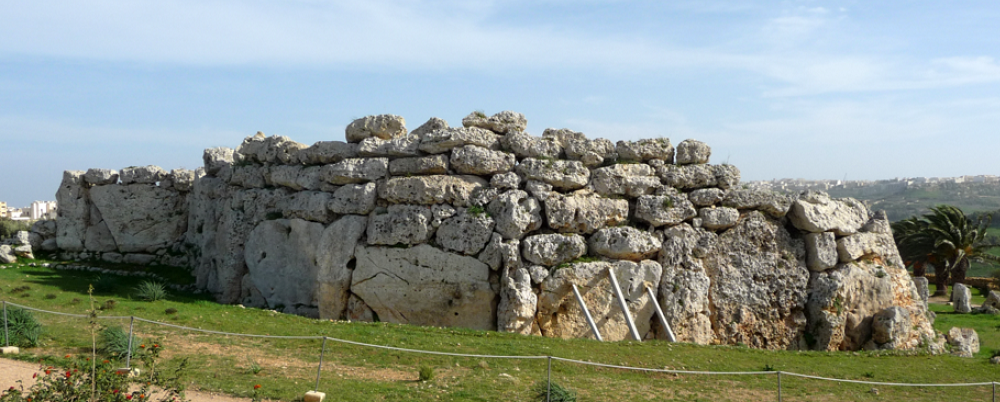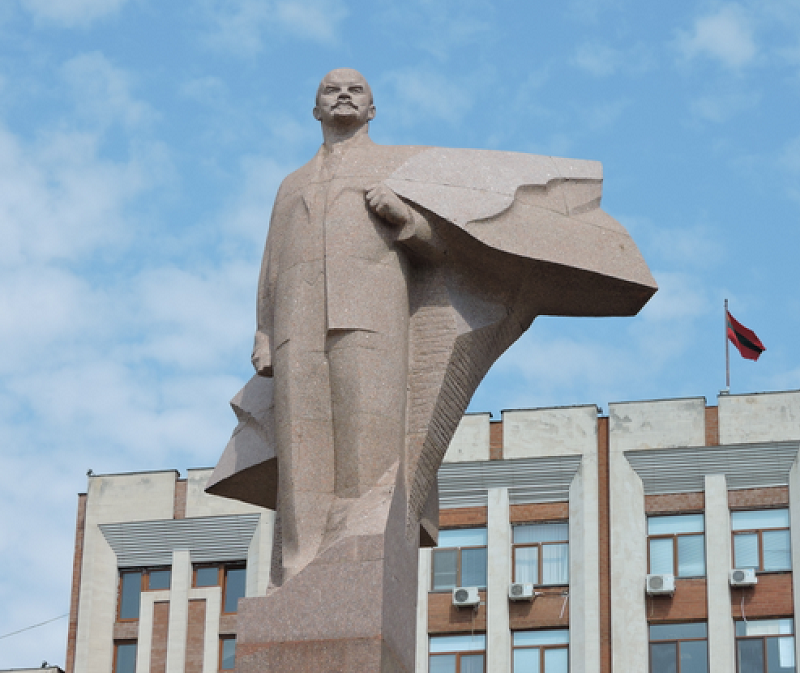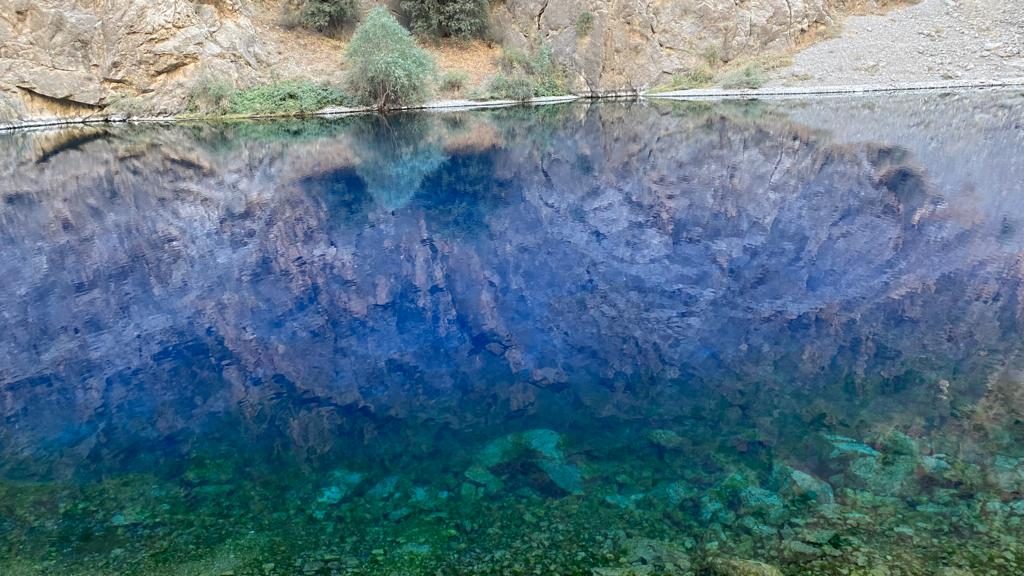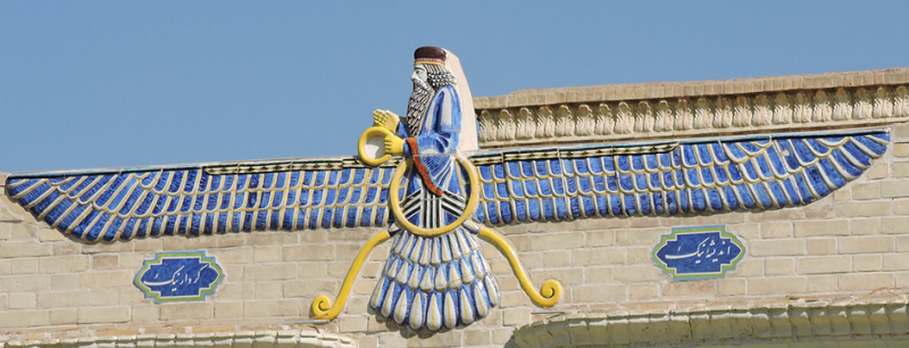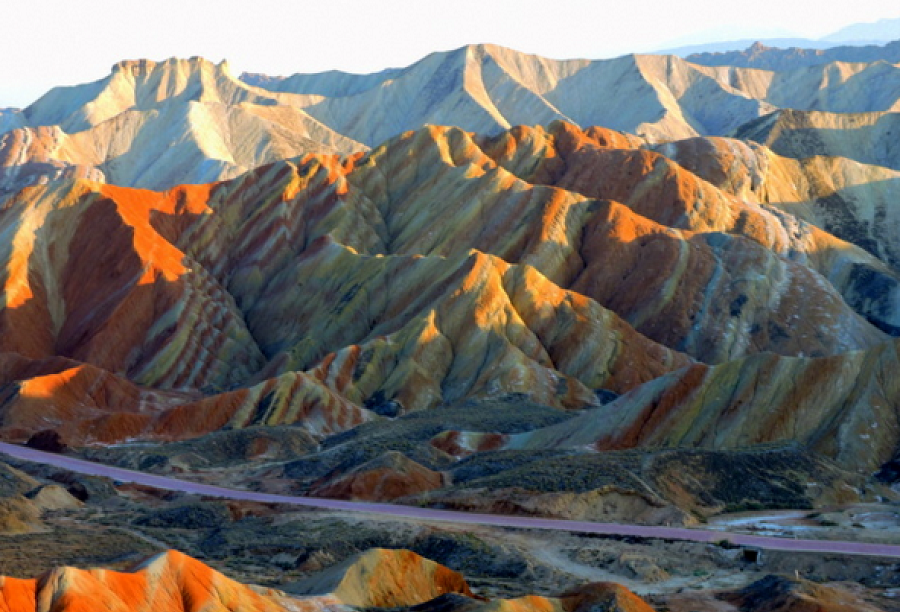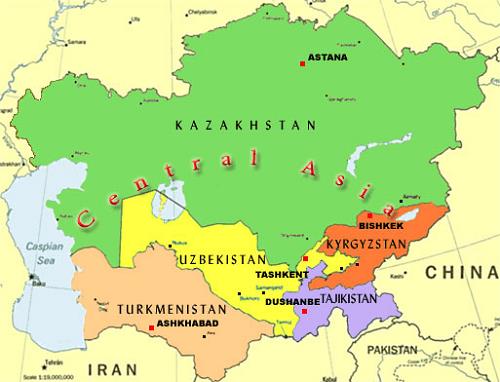Dr. Jack Wheeler
GGANTIJA
The small European island country of Malta in the Mediterranean south of Sicily and close to the north coast of Africa is where civilization emerged from the Stone Age.
The story begins over 7,000 years ago, when a handful of Stone Age tribes in Sicily rafted 55 miles south to land on the twin islands of Gozo and Malta. They lived in caves, then huts, fished, hunted, farmed with primitive tools for they had no metal – and over a period of more than a thousand years taught themselves how to construct massive buildings of stone.
This is the Temple of Ggantija (zhee-gan-tee-zha). Built almost 6,000 years ago (around 3600 BC), it is the oldest free-standing structure in the world. It is older than the pyramids in Egypt by a thousand years, older than Stonehenge by 15 centuries. The enormous stones weighing several tons were cut from the limestone bedrock with tools of stone and antler horn for they had no metal, and moved using small round-cut rocks as ball bearings for they had no wheels.
These folks figured out all by themselves how to build this and other massive stone temples to their gods and goddesses so many millennia ago. Nobody taught them. They were the first. Be sure and see it for yourself this October and experience The Magic of Malta with Rebel and me! (Glimpses of Our Breathtaking World #166 photo ©Jack Wheeler)
MAKING FRIENDS IN ANTARCTICA
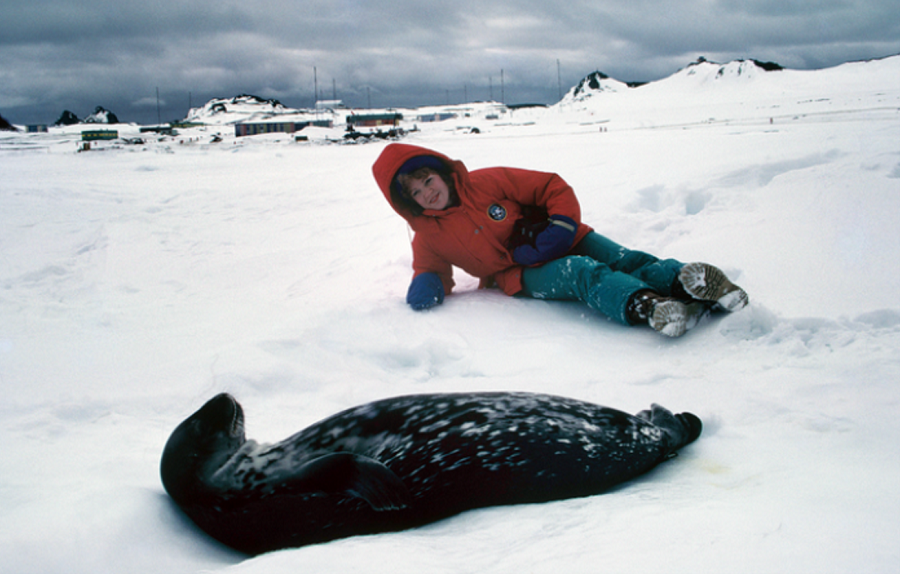 This is my wife Rebel relaxing with a native of Antarctica while on a visit to the Palmer Science Station there. Getting up close and personal with Antarctic wildlife is so easy as they have no fear of us at all, be they seals, elephant seals, or penguins.
This is my wife Rebel relaxing with a native of Antarctica while on a visit to the Palmer Science Station there. Getting up close and personal with Antarctic wildlife is so easy as they have no fear of us at all, be they seals, elephant seals, or penguins.
Better not get too close to male elephant seals in domination combat, however, as they can weigh up to 7,000 pounds. And steer clear of full grown leopard seals, which are apex predators weighing over 1,000 pounds. No worries, though, for Rebel with this young fellow. Experiencing Antarctica is always a memorable adventure. (Glimpses of Our Breathtaking World #94 photo ©Jack Wheeler)
INFANTILIZOMANIA
[We’re starting an Archives feature for Mondays in celebration of TTP’s 20th Anniversary – to reprise a TTP article of years ago and to ask what you think how it applies to today on the Forum. “Infantilizomania” was first published on September 23, 2005. The TTP Team is looking forward to your thoughts!]
Yes, I invented this term. You won’t find it in Webster’s, the OED, or Google. At least not now. Hopefully soon you will, as it becomes the accepted term for the neurosis with which all those on the Left are afflicted.
Just as a pyromaniac is driven by a compulsion to set fires, a kleptomaniac by a compulsion to steal, and – everyone’s favorite example – a nymphomaniac by a compulsion to have sex, an infantilizomaniac is driven by a compulsion to treat adult human beings as children.
The compulsion to infantilize people is the neurotic compulsion of liberals.
Liberals of course do not call it infantilizomania. They call it compassion.
WHERE THE SOVIET UNION STILL EXISTS
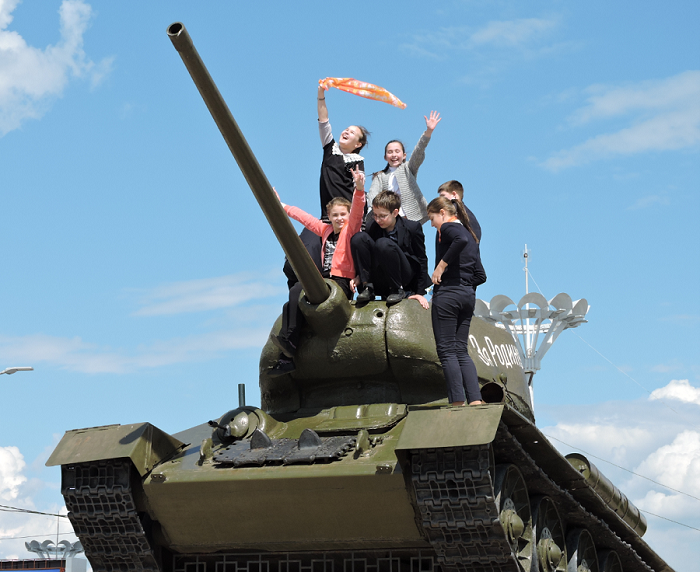 Welcome to Transnistria, where Lenin still lives. The strangest country in Europe is a narrow sliver of landlocked land along the east side of the Dnieper River sandwiched between Moldova and Ukraine. When both declared independence as the Soviet Union broke apart in 1991, the people here decided they were still part of the USSR even though it had ceased to exist.
Welcome to Transnistria, where Lenin still lives. The strangest country in Europe is a narrow sliver of landlocked land along the east side of the Dnieper River sandwiched between Moldova and Ukraine. When both declared independence as the Soviet Union broke apart in 1991, the people here decided they were still part of the USSR even though it had ceased to exist.
The half-million Transnistrians are still pretending their country is a Soviet Socialist Republic. Lenin statues abound, the hammer & sickle is on their flag, the state media broadcasts stories about “glorious Soviet history.” Meanwhile, Transnistria’s economy is doing well thanks to bountiful Kremlin subsidies and as a haven for the Russian mob. In the capital of Tiraspol I saw Beemers, Bentleys, and even a Corvette Sting Ray cruising the streets. Restaurants and bars are packed. Kids are well-dressed. That’s a gaggle of them you see above happily playing on a Russian tank in a park.
Maybe it’s all kind of a funny game to everyone here. As an American I was welcomed with smiles. You will be too if you visit – it’s a truly unique experience! (Glimpses of Our Breathtaking World #69 photo ©Jack Wheeler)
FLASHBACK FRIDAY – THE POTALA
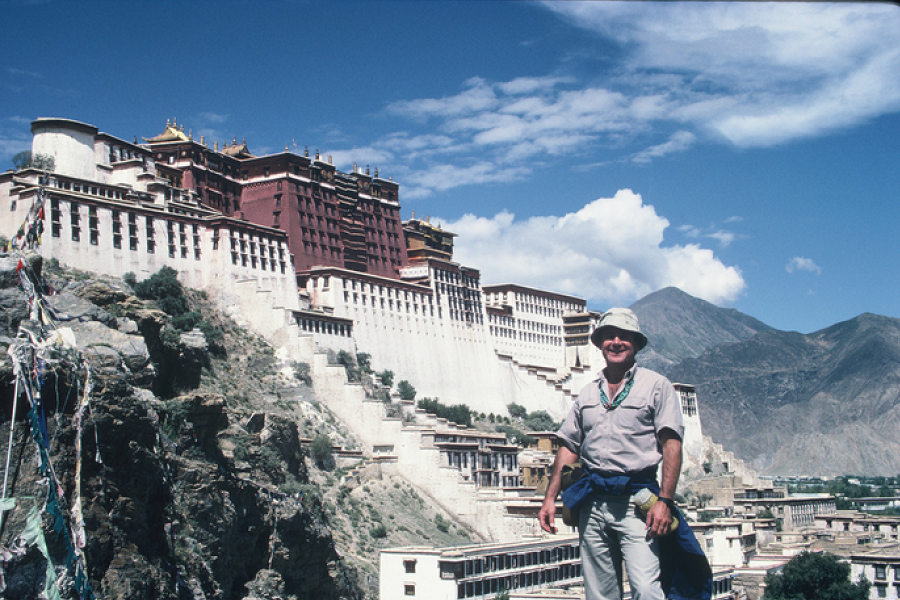 Lhasa, Tibet, 1986. Built in the mid-1600s, the Potala in Lhasa, Tibet was the home of the Dalai Lama as the incarnation of Avalokiteśvara, the Buddhist deity of compassion, until the Communist Chinese colonized Tibet in 1959.
Lhasa, Tibet, 1986. Built in the mid-1600s, the Potala in Lhasa, Tibet was the home of the Dalai Lama as the incarnation of Avalokiteśvara, the Buddhist deity of compassion, until the Communist Chinese colonized Tibet in 1959.
The Potala is one of the world’s great architectural wonders, thirteen stories high with molten copper poured into the foundation to stabilize it from earthquakes, 1,000 rooms, 10,000 shrines, 200,000 statues. I’ve been here several times since 1986, and it’s always such a powerful experience. Yet to Tibetans, this is a “dead” building as the Dalai Lama is gone. It is my hope that someday, the Dalai Lama will live here in a Free Tibet once again. (Glimpses of Our Breathtaking World #114 Photo ©Jack Wheeler)
HALF-FULL REPORT 04/07/23
 It’s Good Friday! Welcome to the Easter HFR! And to TTP’s 20th Anniversary (see more about this at the end).
It’s Good Friday! Welcome to the Easter HFR! And to TTP’s 20th Anniversary (see more about this at the end).
This Sunday, Christians celebrate The Resurrection. As the holiest day of the year, Easter has sacred significance far above Easter eggs and bunnies. As TTP is a political and geopolitical discussion site, what binds TTPers together is the profound significance of the moral foundation of Christendom, or Western Civilization.
What worries, ever terrifies, many of us, is the seeming disintegration of that moral foundation. Dare then, at this Eastertime, we hope for a moral Resurrection of America and Western Civilization? We can always hope, yes, but are there any signs that such a future could actually be on the way?
Let’s talk about one such sign that clearly emerged this week. And a good many others as well.
MOROCCO’S DADES GORGE
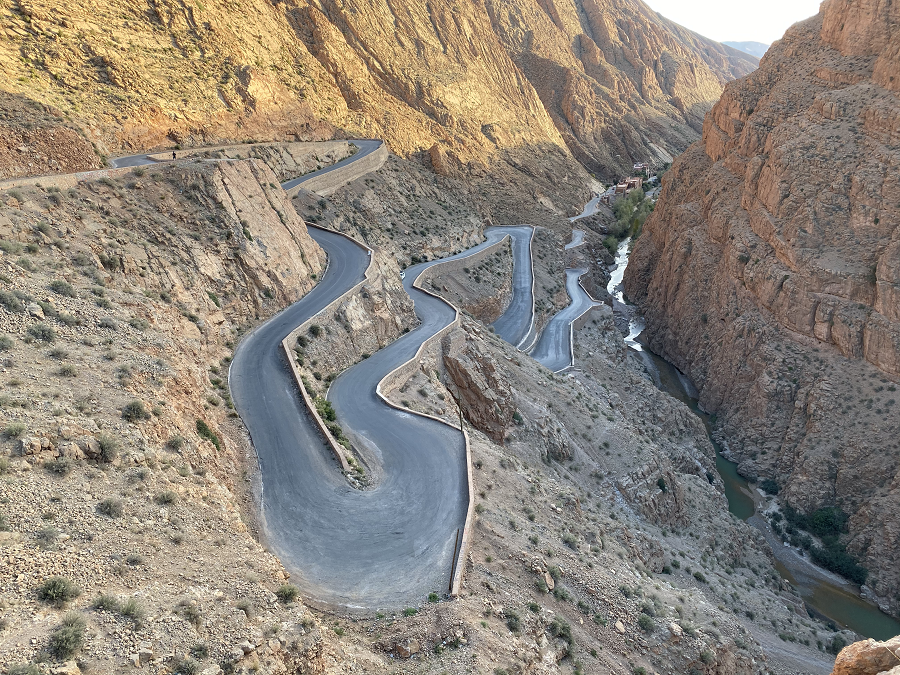 This astounding road is how you traverse the Dades Gorge on the Road of a Thousand Kasbahs in Morocco. Kasbahs are fortified villages of the Berbers, who have lived here since the end of the Ice Ages 12,000 years ago (related to the Lapps of the Scandinavian Arctic, both descending from Cro-Magnon hunters in Cantabria of northern Spain).
This astounding road is how you traverse the Dades Gorge on the Road of a Thousand Kasbahs in Morocco. Kasbahs are fortified villages of the Berbers, who have lived here since the end of the Ice Ages 12,000 years ago (related to the Lapps of the Scandinavian Arctic, both descending from Cro-Magnon hunters in Cantabria of northern Spain).
The road is rated as one of the most scenic drives in the world. It is in the High Atlas Mountains (once higher than the Himalayas and joined to the Appalachians in the northeast US before splitting apart to form the Atlantic Ocean 200 million years ago). Here you go from the sand dunes of the Sahara to the fabulous kasbahs of Skoura, Ouarzazate, and Ait Benhaddou. The drive is one of the many life-memorable experiences we have in our exploration of Moroccan Magic. (Glimpses of Our Breathtaking World #110 photo ©Jack Wheeler)
SLOVENIA’S VINTGAR GORGE
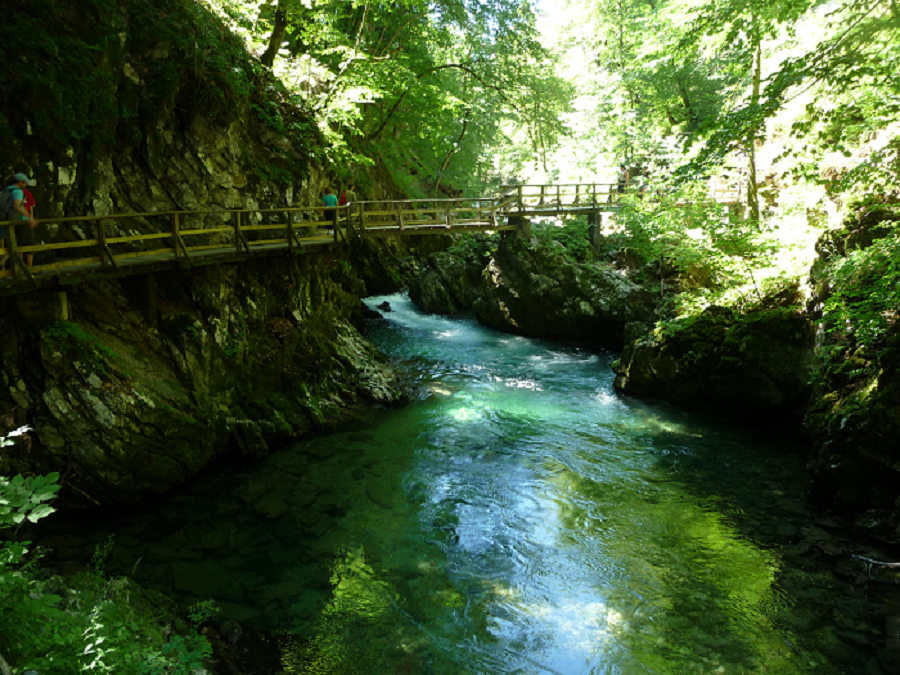 In a hidden corner of Europe, the Radovna River pours off the Julian Alps to carve out the Vintgar Gorge with crystal clear water. A mile-long walkway with towering limestone cliffs on either side is your access.
In a hidden corner of Europe, the Radovna River pours off the Julian Alps to carve out the Vintgar Gorge with crystal clear water. A mile-long walkway with towering limestone cliffs on either side is your access.
Nearby is the gorgeous Lake Bled, with Bled Castle suspended atop a shoreline cliff. The medieval village of Piran, built on a spit of land projecting into the Adriatic Sea and encircled by a white sand beach is a short drive away. Ljubljana is one of Europe’s most utterly charming capital cities.
Most people have only heard of Slovenia as the birthplace of First Lady Melania Trump, but those who have been here understand it is one of the most entrancing countries on the European continent – pristine beauty, spotless environment, friendly and hospitable people, safe and very well-run. Whenever your next visit to Europe may be, try to include a few days or week or so here. You’ll never run out of fascinating things to do. A stroll through the Vintgar Gorge is an example out of so many. (Glimpses of Our Breathtaking World #19 photo ©Jack Wheeler)
THE WORLD’S MOST INTERESTING ISLAND
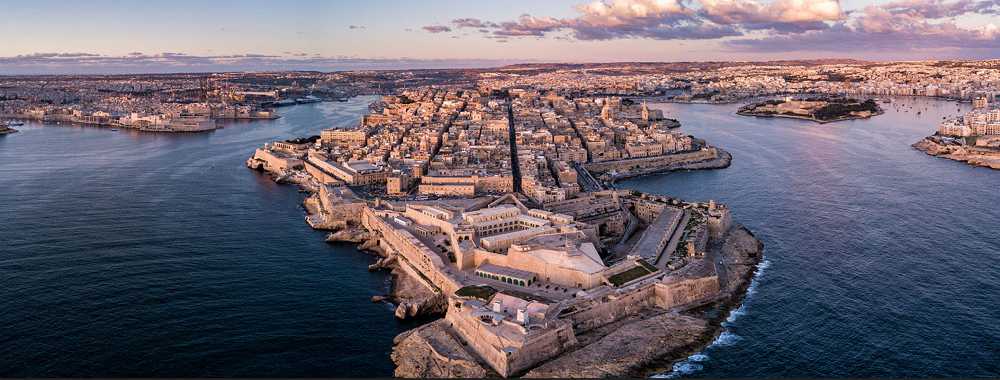 People from Europe have been living here for 8,000 years. They taught themselves how to build the world’s oldest free-standing structures, carving out gigantic stone blocks with antler horn 1,000 years before Egyptians built the pyramids.
People from Europe have been living here for 8,000 years. They taught themselves how to build the world’s oldest free-standing structures, carving out gigantic stone blocks with antler horn 1,000 years before Egyptians built the pyramids.
The ancient Greeks thought the island so enchanting that Homer’s Odyssey sang of Odysseus (Ulysses) being under the spell of the nymph Calypso here for 7 years.
Medieval fortresses and walled cities, spectacular baroque architecture, stunning scenery with hidden sea coves in crystal clear cobalt blue water, and of course, the gigantic megalithic temples built so many thousands of years ago – for here is where Western Civilization began. And here, a few centuries ago, is where Western Civilization was saved from extinction.
Come here and you’ll be enchanted too.
BEST OF THE FORUM
 Last Monday (3/27), Joel Wade wrote his temporarily last Keeping Your Sanity column for us, as he focuses on completing his next book, Mastering The Emotional Side of Money. I’d like to take this opportunity to thank Joel for his words of wisdom for the recent years now, as coping with them has not been easy and he has helping so many of us do so.
Last Monday (3/27), Joel Wade wrote his temporarily last Keeping Your Sanity column for us, as he focuses on completing his next book, Mastering The Emotional Side of Money. I’d like to take this opportunity to thank Joel for his words of wisdom for the recent years now, as coping with them has not been easy and he has helping so many of us do so.
Thanks so much, Joel! And keep us posted on your book’s progress – hopefully you can post excerpts on TTP?
Meanwhile, to take Joel’s place, I thought what could be better than to share what your fellow TTPers are giving us on the Forum? You know I’ve always thought the Forum was one of the most valuable parts of TTP given TTPers’ extraordinary knowledge and insight.
So here are two examples of the Best of the Forum – not the best to imply others are less so, but certainly examples of what your fellow TTPers can contribute to the TTP membership. Here are Mark Deuce and Mellie responding on the HFR 03/24/23 Forum. Thanks to you both! Blue skies… Jack
THE EYELASH AT DAWN
The first of The Seven Pearls of Shing is called Mijnon or The Eyelash. It’s at 5,300 ft in the Fann Mountains of Western Tajikistan. At dawn, the air is still and crystal clear as is the water. The surface of the lake becomes a mesmerizing mirror with the early light reflecting the vertical cliffs above while penetrating to the translucent lake bed below. It is an epic example of the boundless beauty of our world.
Yet Tajikistan is only one of the “Stans” of Central Asia, an ultimate of the world’s mysterious, remote, and wondrous places. There are four others: Kazakhstan, Kyrghistan, Uzbekistan, and Turkmenistan. A number of your fellow TTPers have been there with me and can tell you what a fabulously life-memorable adventure it is to explore all five.
We’ll be there again this September: The Heart of Central Asia: September 2-21, 2023. Be with us with your loved one, your children, or grandchildren and you’ll all have an experience to treasure for all of your lives. Click on the link to see for yourself. (Glimpses of Our Breathtaking World #263 photo ©Jack Wheeler)
FLASHBACK FRIDAY – WITH MBUTI PYGMIES IN THE CONGO
 August, 1971. The gentle Mbuti people live in the Ituri rainforest, one of the world’s densest jungles, in northeastern DR Congo. They are among the most ancient of all human populations, with their ancestors having hunted in these forests for over 60,000 years. The tallest among them is under five feet.
August, 1971. The gentle Mbuti people live in the Ituri rainforest, one of the world’s densest jungles, in northeastern DR Congo. They are among the most ancient of all human populations, with their ancestors having hunted in these forests for over 60,000 years. The tallest among them is under five feet.
It was on my first visit to Africa that I was able to spend time with them. They live in scattered bands of a few dozen each, always on the move in search of game, sleeping in small makeshift huts of branches and leaves, and far away from villages of Bantus who always try to enslave them.
Their music is hypnotic. To the beat of drums of hollowed-out logs, they sing with a polyphonic complexity that is extraordinary. I’ll never forget the performance they gave for me. Alas, no tape recorder – much less videocam back then! (Glimpses of Our Breathtaking World #65 photo ©Jack Wheeler)
THE HYPOGEUM OF MALTA
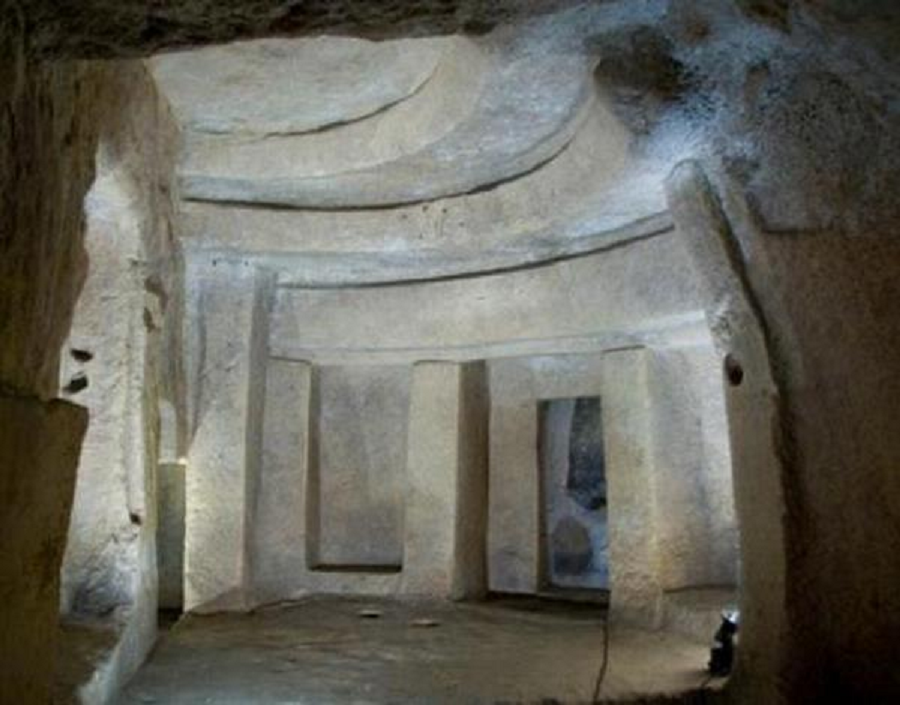 The extraordinary rock-cut necropolis known as the Hypogeum (hi-po-gee-um) is the only prehistoric underground temple in the world. For over a thousand years (3500-2500 BC), the temple and burial complex (eventually housing 7,000 skeletons) was carved out and down – dozens of chambers, with rock-cut replicas of above-ground temples including simulated corbelled roofs. (A corbelled roof uses stone slabs that progressively overlap each other until the room is roofed over.)
The extraordinary rock-cut necropolis known as the Hypogeum (hi-po-gee-um) is the only prehistoric underground temple in the world. For over a thousand years (3500-2500 BC), the temple and burial complex (eventually housing 7,000 skeletons) was carved out and down – dozens of chambers, with rock-cut replicas of above-ground temples including simulated corbelled roofs. (A corbelled roof uses stone slabs that progressively overlap each other until the room is roofed over.)
The Megalthic Maltese learned to cut from the limestone bedrock with tools of stone and antler horn for they had no metal. These folks figured out all by themselves how to build extraordinary temples to their gods and goddesses close to six thousand years ago. Nobody taught them. They were the first. Only one reason Malta is one of our planet’s most fascinating places. (Glimpses of Our Breathtaking World #109 photo ©Jack Wheeler)
WHAT A REAL CANNIBAL LOOKS LIKE
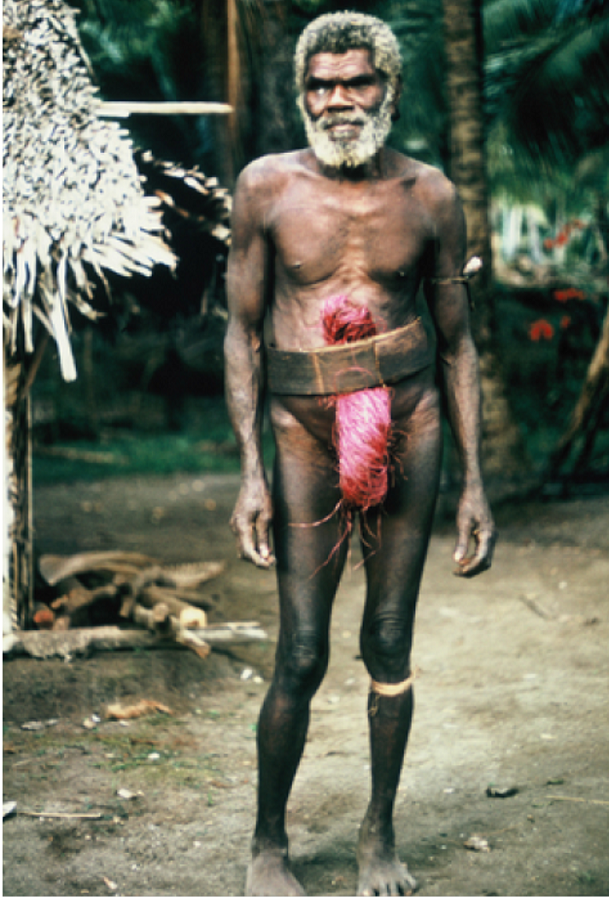 On the remote north side of the island of Malekula in Vanuatu, there lives a cannibal tribe called the Big Nambas. The men wear a penis gourd wrapped in pandamus fibers, and eat “man long pig,” cooked human enemies. You have to trek over mountains of thick jungle to reach them. When I was able to years ago, there were a few men who continued the practice. This gentleman is one of them. I was in no danger as they were very kind and gracious to me.
On the remote north side of the island of Malekula in Vanuatu, there lives a cannibal tribe called the Big Nambas. The men wear a penis gourd wrapped in pandamus fibers, and eat “man long pig,” cooked human enemies. You have to trek over mountains of thick jungle to reach them. When I was able to years ago, there were a few men who continued the practice. This gentleman is one of them. I was in no danger as they were very kind and gracious to me.
That wasn’t the case a century ago when the first explorers, Martin & Osa Johnson, reached them. Their 1918 film, “Cannibals of the South Seas,” made the Johnsons famous, and you can see it on YouTube. Today they are far more benign. It is an extraordinary experience to meet a culture of fearsome reputation and realize they are people like you and me. (Glimpses of Our Breathtaking World #103 photo ©Jack Wheeler)
THE MONEY THAT MADE US HUMAN
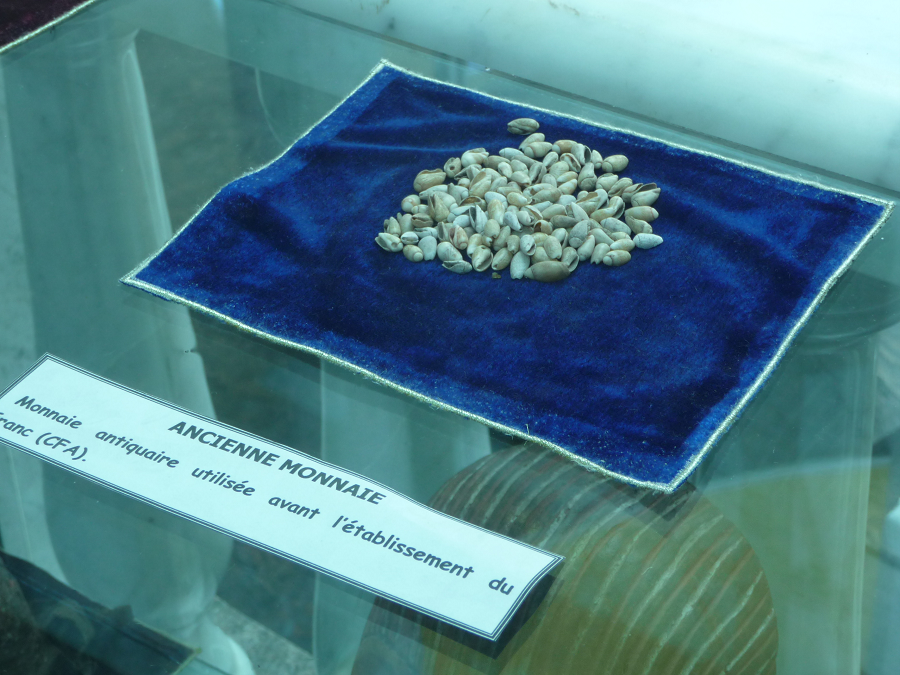 [Joel Wade’s Keeping Your Sanity Through the Virtue of Trade and Money today (7/25) bears directly upon this. Money and trade are what have made us human for 90 millennia.]
[Joel Wade’s Keeping Your Sanity Through the Virtue of Trade and Money today (7/25) bears directly upon this. Money and trade are what have made us human for 90 millennia.]
On display in the National Museum of Congo in Brazzaville: “Ancient Money.” I took the picture because this is the money that made us human 90,000 years ago. They are tiny Nassarius gibbosulus estuarine snail shells too small for food, perforated with small holes to string on a necklace, used as money “before the establishment of the CFA” as the sign says, the Central Africa Franc in 1945.
These are the same species of shell that was the first jewelry in history unearthed at seashore sites in Morocco and hundreds of miles inland in Algeria some 90kya (thousand years ago) – meaning they were traded. For the first time in history, a species began to exchange things between unrelated unmarried individuals to share, swap, barter and trade, and over great distances.
Other animals do not barter. This, maintains science author Matt Ridley, is what made us distinctly human, enabling us to cooperate with other groups or tribes, to innovate, to evolve ever more complex cultures. This little shell, used as money, is the founding of human culture. (Glimpses of Our Breathtaking World #61 photo ©Jack Wheeler)
ELEPHANTS IN THE SAHARA
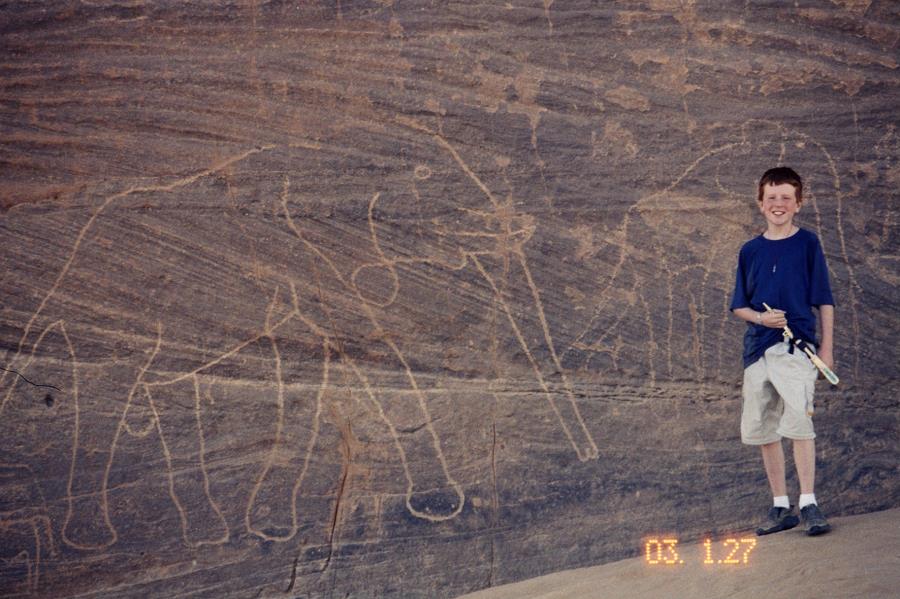 10,000 years ago, the Sahara was green, with lakes, rivers, and such an abundance of animals it was a hunting paradise for people who lived here. You’ll find their petroglyphs carved on to rock outcroppings like this that my son Jackson and I found on a Trans-Sahara Expedition in 2003.
10,000 years ago, the Sahara was green, with lakes, rivers, and such an abundance of animals it was a hunting paradise for people who lived here. You’ll find their petroglyphs carved on to rock outcroppings like this that my son Jackson and I found on a Trans-Sahara Expedition in 2003.
The Milankovitch astronomical cycles that drive Earth’s climate produced a West African monsoon that greened the Sahara back then. When the cycles shifted ending the monsoon, the Sahara turned dry desert as it remains today. Political cycles that permitted a peaceful crossing of the world’s greatest desert have also shifted, making this too dangerous now.
A Trans-Sahara Expedition is one of the world’s great adventures. Hopefully, one will be possible again in the not-too-distant future. (Glimpses of Our Breathtaking World #7 photo ©Jack Wheeler)
FLASHBACK FRIDAY – THE CRUSADER FORTRESS IN THE CAUCASUS
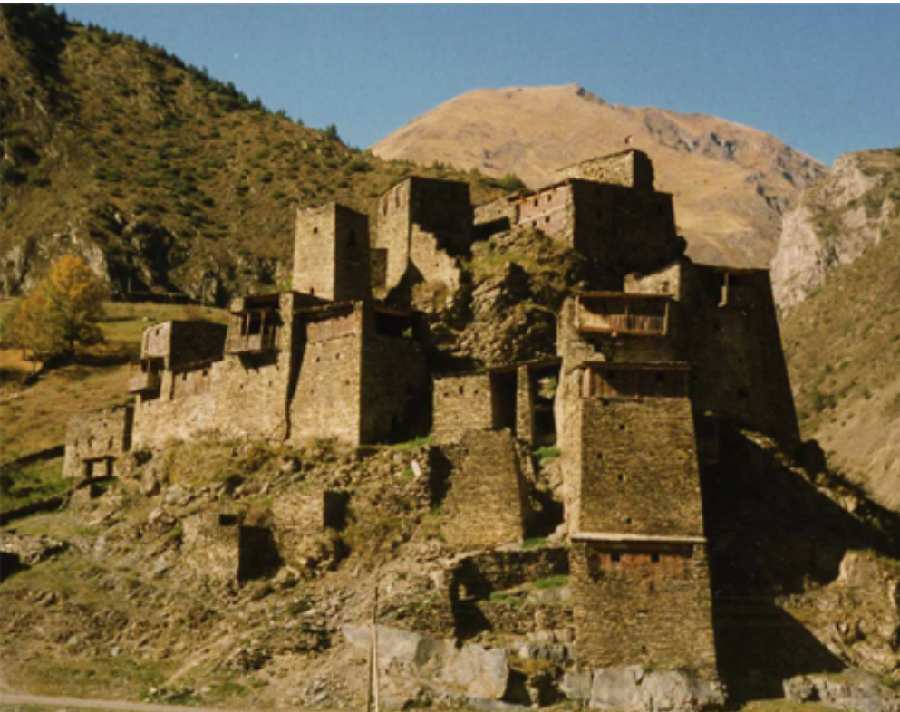 This is the fortress town of Shatili in an extremely remote Caucasus region in Georgia called Khevsureti. It was built by the Crusaders 1,000 years ago. The Khevsur people who live here trace their ancestry back to these Crusaders and until the 1930s still wore chain mail in feud-battles with other towns. I took this picture in 1991.
This is the fortress town of Shatili in an extremely remote Caucasus region in Georgia called Khevsureti. It was built by the Crusaders 1,000 years ago. The Khevsur people who live here trace their ancestry back to these Crusaders and until the 1930s still wore chain mail in feud-battles with other towns. I took this picture in 1991.
American traveler Richard Halliburton (1900–1939) saw and recorded the customs of the Khevsurs in 1935. The Khevsur men, dressed in chain mail and armed with broadswords, wore garments full of decoration made up of crosses and icons. They don’t do that anymore, but they proudly retain their Crusader Christian heritage – for Georgia adopted Christianity in the 4th century AD. (Glimpses of Our Breathtaking World #85 photo ©Jack Wheeler)
HALF-FULL REPORT 03/24/23
For Aristotle 2,360 years ago and many philosophers since, courage is the most important moral virtue over all the rest, such as honesty, integrity, empathy, fairness and so on – because courage is what enables a person to act virtuously in any way like being honest.
A Courageous America wouldn’t stand for the Presidency of the United States to be stolen in broad daylight. A Courageous America would get rid of Woke CRT, DEI, Tranny Tyranny, and Climate Fascism in a heartbeat. Nor would it tolerate for a moment our city streets to be sewers of homelessness, with DA’s refusing to prosecute criminals and no one safe to walk the streets.
We have become, on the whole, a Nation of Learned Helplessness – the Left’s goal for America as people who feel helpless to fight or get rid of what’s ruining their lives and their country are so easy to control. Just look at how meekly so many millions accepted the lockdowns and other fascist restrictions on their freedom over a Chinese flu bug.
How bad is it? How about the Pentagon arguing for child-sex changes among our military’s children?
THE HIDDEN NORTH FACE OF KANCHENJUNGA
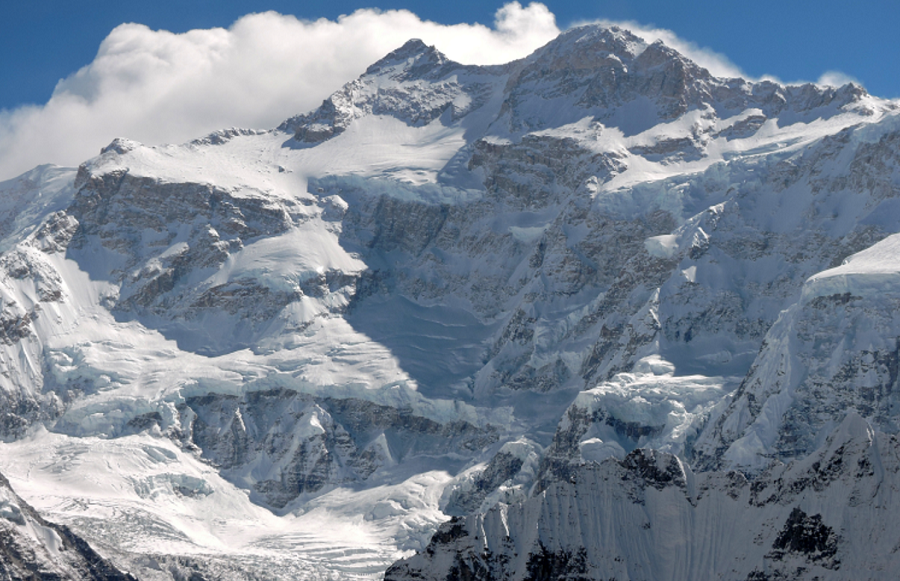 This is one of the truly great mountain sights on earth yet never seen – except for professional mountaineers and those on our Himalaya Helicopter Expeditions. Kanchenjunga at 28,169 feet (8,586 meters) is the world’s 3rd highest mountain (after Everest and K2), with a drop from summit (the peak on the left in front of the cloud) to the glacier at it base of 12,000 feet straight down.
This is one of the truly great mountain sights on earth yet never seen – except for professional mountaineers and those on our Himalaya Helicopter Expeditions. Kanchenjunga at 28,169 feet (8,586 meters) is the world’s 3rd highest mountain (after Everest and K2), with a drop from summit (the peak on the left in front of the cloud) to the glacier at it base of 12,000 feet straight down.
You can be awed by such a picture, but to actually physically be here, to witness this magnificence personally so that it is forever a part of your life, is to feel a depth of awe that has to be experienced to be understood. Kanchenjunga is part of the Himalayas, now on the border of Nepal and Sikkim, once an independent kingdom now absorbed into India. We fly right up the North Face, and into the Amphitheatre of the Southwest Face as well.
We’ll be here once again next late October. (Glimpses of Our Breathtaking World #31 photo ©Jack Wheeler)
ROME IN AFRICA
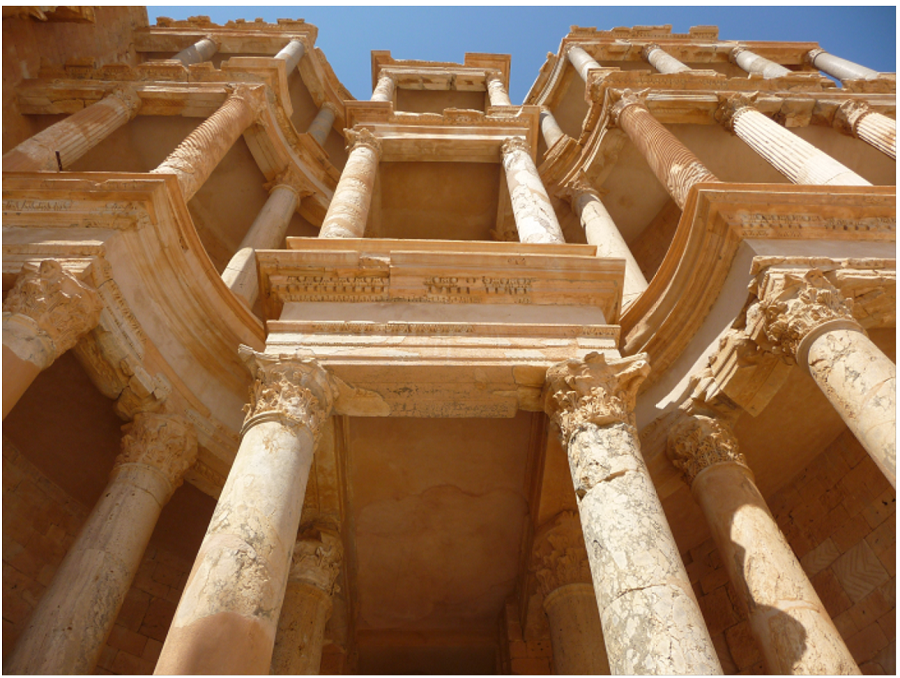 The best place to see Roman ruins is not in Rome or anywhere in Italy. It’s in Africa – specifically on the Mediterranean coast of Libya. This is the Roman theatre at Sabratha built in the 1st century BC. Over 2,000 years old, it’s still mostly intact. Starting as a Berber village, the Phoenicians founded the city as Sabrat by 500 BC. Then came the Greeks, then the Carthaginians, and after the Punic Wars came Rome.
The best place to see Roman ruins is not in Rome or anywhere in Italy. It’s in Africa – specifically on the Mediterranean coast of Libya. This is the Roman theatre at Sabratha built in the 1st century BC. Over 2,000 years old, it’s still mostly intact. Starting as a Berber village, the Phoenicians founded the city as Sabrat by 500 BC. Then came the Greeks, then the Carthaginians, and after the Punic Wars came Rome.
The Libyan coast was a lush fertile place back then. So much so that Sabratha and the other major Roman city nearby, Leptis Magna, produced several million pounds of olive oil per year – sale of which to Rome enabled them to achieve great wealth. It’s a shame that Libya remains today in chaotic civil war. Hopefully the day is not off when experiencing Rome’s most magnificent remains will be possible here again. (Glimpses of Our Breathtaking World #79 photo ©Jack Wheeler)
HAPPY NOWRUZ!
It is March 21 – the Vernal Equinox, the first day of Spring, the Persian New Year, and the Persian Christmas too, for all over Iran today people are celebrating the birthday of the founder of the Persian religion Zoroaster.
What’s that? Isn’t the religion of Iran Islam -- certainly not Zoroastrianism? Well, times are changing.
Nowruz (“new day” in Persian) is an official government holiday now in mullah-run Iran. Note today (3/21) how the Tasnim News Agency of the Revolutionary Guard or Pasdaran pretends it is just Persian New Years only: Nowruz: The New Year Festivity Celebrated in Iran.
Not a word or hint of Zoroaster – or as the Iranians call him, Zardosht. The truth is, thanks to Mullah Islamofascism, millions of Persians and others in Iran from Kurds to Azeris are turning away from Islam and towards their ancient original religion that predates Mohammed by over two thousand years.
THE CHURCH OF SAINT JOSEPH OF ARIMETHEA IN IRAN
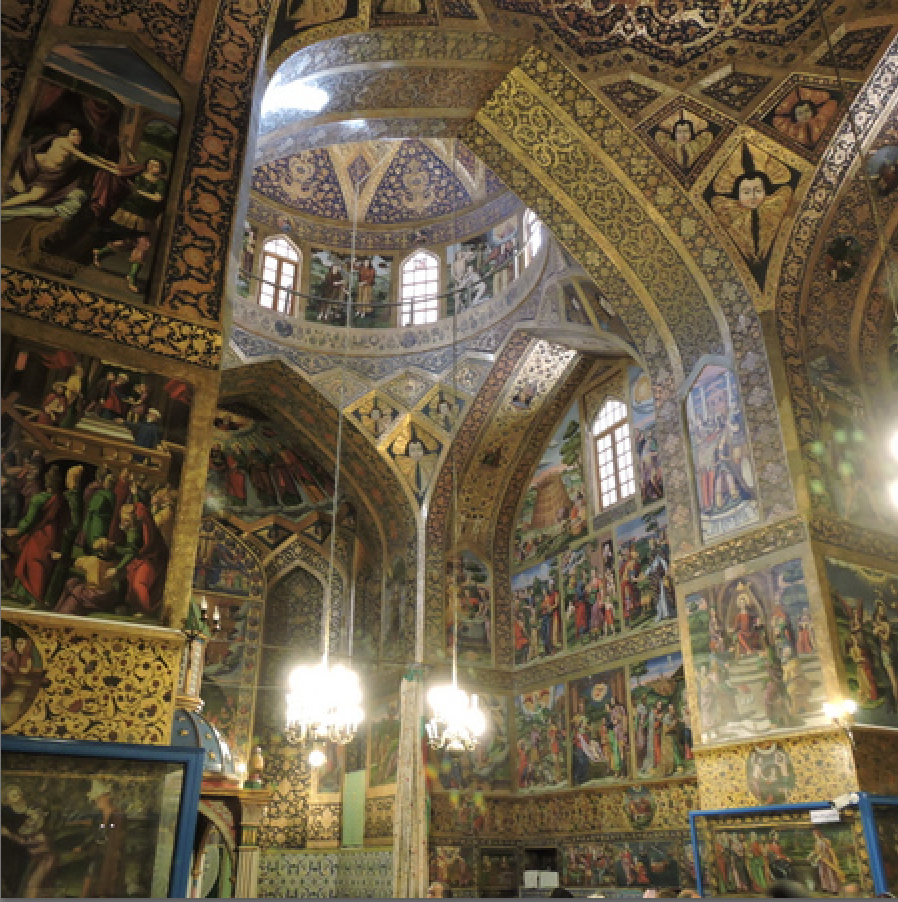 In the early 1600s, some 150,000 Armenians fled persecution from the Ottoman Empire to settle in Isfahan, Persia under the protection of Shah Abbas. There they created an extraordinary trading network that stretched from Amsterdam to Manila, becoming prosperous in the process. This enabled them to build extraordinary Armenian Apostolic Church cathedrals – Armenian Christianity being one of the oldest Christian denominations originating in the 1st century AD.
In the early 1600s, some 150,000 Armenians fled persecution from the Ottoman Empire to settle in Isfahan, Persia under the protection of Shah Abbas. There they created an extraordinary trading network that stretched from Amsterdam to Manila, becoming prosperous in the process. This enabled them to build extraordinary Armenian Apostolic Church cathedrals – Armenian Christianity being one of the oldest Christian denominations originating in the 1st century AD.
Here you see the Armenian Apostolic Church in Isfahan, built in 1606 and dedicated to Saint Joseph of Arimathea, the disciple who took Jesus’ body off the Cross. The Armenian Quarter of Isfahan remains populated by thousands of Armenian Christians today who may freely practice their faith, albeit strictly within the confines of their neighborhood and never beyond. Nonetheless, it comes as a shock to see this in present-day Mullah Iran. (Glimpses of Our Breathtaking World #262 photo ©Jack Wheeler)
MAGIC MOUNTAINS
In a remote valley between the northern escarpment of the Tibetan Plateau and the Gobi Desert of Inner Mongolia, you find these magic painted mountains of red sandstone created by Himalayan uplift and millions of years of erosion. It’s at the sunrise light of early dawn that the colors are most apparent before they get sunwashed in the bright of day. It takes quite a hike in pre-dawn darkness to get to the right viewpoints at the right time, but certainly worth it. (Glimpses of Our Breathtaking World #261 photo ©Jack Wheeler)
FLASHBACK FRIDAY THE BAMIAN BUDDHA
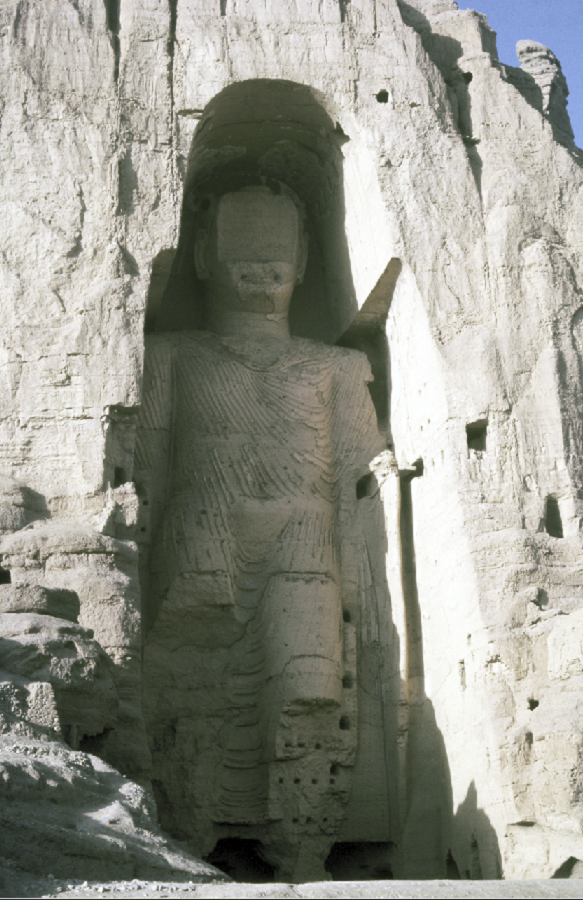 Bamian, Afghanistan 1973. I spent some time in the Bamian Valley north of Kabul 50 years ago. What you see is the largest of the Bamian Buddhas carved into to sandstone cliffs in 600 AD by a Central Asian people who revered Buddha and called themselves Ebodai. It stands 180 feet tall. The Bamian Valley was a Buddhist pilgrimage site, with thousands of monks in monasteries and temples from roughly 100 AD until 800 AD, the time of the Moslem conquest of Afghanistan.
Bamian, Afghanistan 1973. I spent some time in the Bamian Valley north of Kabul 50 years ago. What you see is the largest of the Bamian Buddhas carved into to sandstone cliffs in 600 AD by a Central Asian people who revered Buddha and called themselves Ebodai. It stands 180 feet tall. The Bamian Valley was a Buddhist pilgrimage site, with thousands of monks in monasteries and temples from roughly 100 AD until 800 AD, the time of the Moslem conquest of Afghanistan.
It was left untouched until the Moslem Emperor of India, Aurangzeb (son of Shah Jehan, builder of the Taj Mahal), blew off the statue’s legs with artillery in 1700. Then in 1890, the Moslem Afghan King of Afghanistan, Abdur Rahman Khan, ordered the Buddha’s face above the nose sliced off. The same Islamic practice of literal de-facing conducted upon ancient Egyptian statues including the Sphinx.
It was in 2001 that the Afghan Taliban blew up the entire statue you see here along with others as anti-Islamic “idols.” I consider myself immensely fortunate to witness this extraordinary work of historic art while it still existed.
(Glimpses of Our Breathtaking World #260 photo ©Jack Wheeler)
THE WORLD’S REMOTEST INHABITED ISLAND
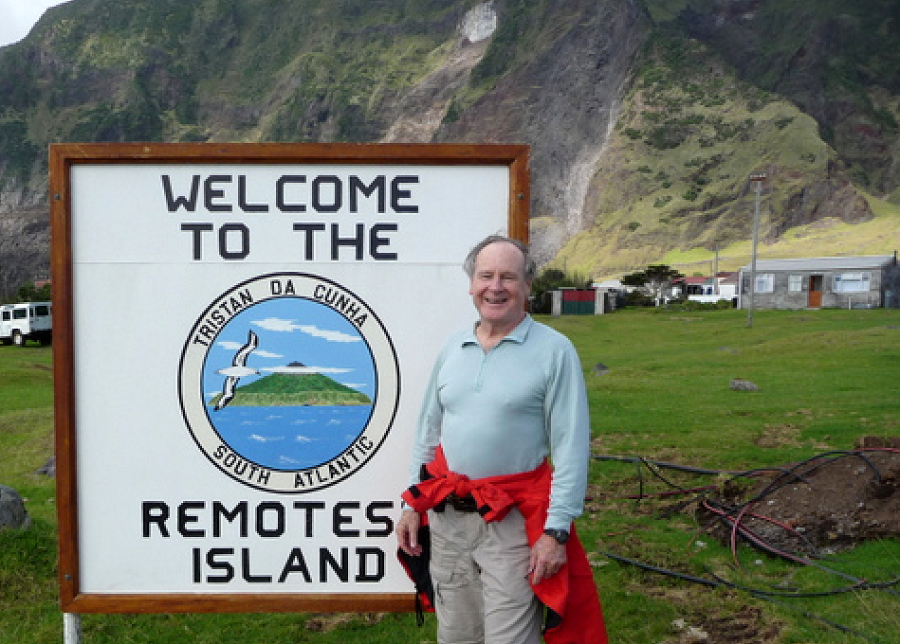 That would be Tristan da Cunha in the middle of the South Atlantic Ocean. Some 260 Tristanians live here, all British citizens as the island is a UK Territory, in the island’s only community of Edinburgh-of-the-Seven-Seas. There’s no way to fly here – you have to take a boat for at least a week from Cape Town (and then a week back).
That would be Tristan da Cunha in the middle of the South Atlantic Ocean. Some 260 Tristanians live here, all British citizens as the island is a UK Territory, in the island’s only community of Edinburgh-of-the-Seven-Seas. There’s no way to fly here – you have to take a boat for at least a week from Cape Town (and then a week back).
Tristanians are among the world’s most special people. Since the island was first settled in 1810, there has never been a single murder, abortion, or divorce among them. They are at peace with themselves, unfailingly cheerful, hospitable, and contented. If you are lucky enough to reach here, you may not want to ever leave. (Glimpses of Our Breathtaking World #42 Photo ©Jack Wheeler)
THE ROCK-HEWN CHURCHES OF LALIBELA, ETHIOPIA
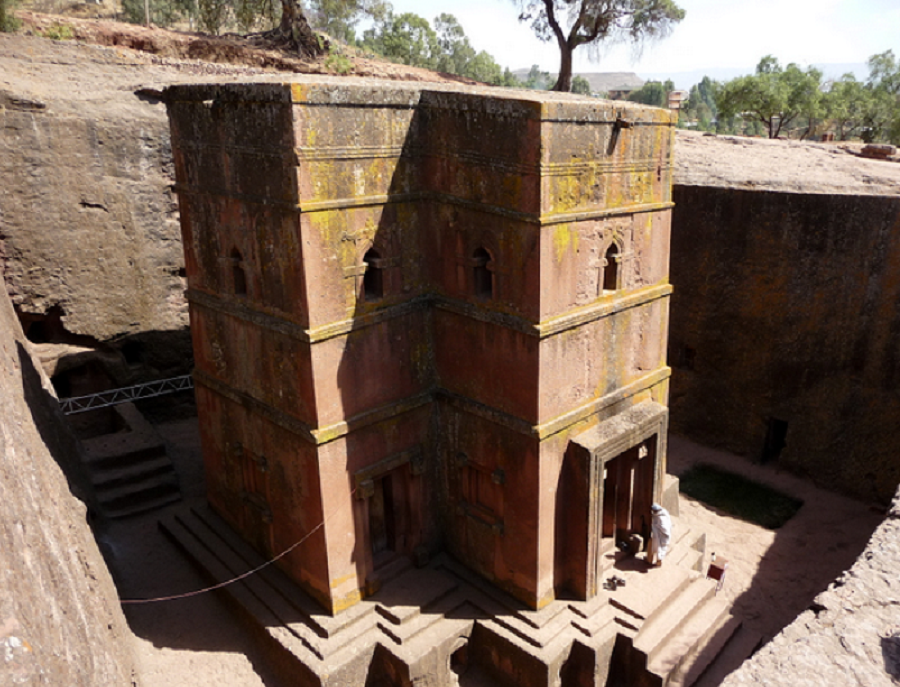 900 years ago, the Church of Saint George (Bete Giyorgis in Amharic) was not built – it was hand carved downwards from a horizontal rock ledge. There is nothing like the rock-hewn churches in Lalibela anywhere else in the world.
900 years ago, the Church of Saint George (Bete Giyorgis in Amharic) was not built – it was hand carved downwards from a horizontal rock ledge. There is nothing like the rock-hewn churches in Lalibela anywhere else in the world.
Christianity was established in Ethiopia in 330 AD and has flourished ever since. Experiencing the devotion still so very much alive in one of the oldest Christian countries on earth is inspiring. (Glimpses of Our Breathtaking World #26 photo ©Jack Wheeler)
HOW HAPPY CAN A YOUNG BOY BE?
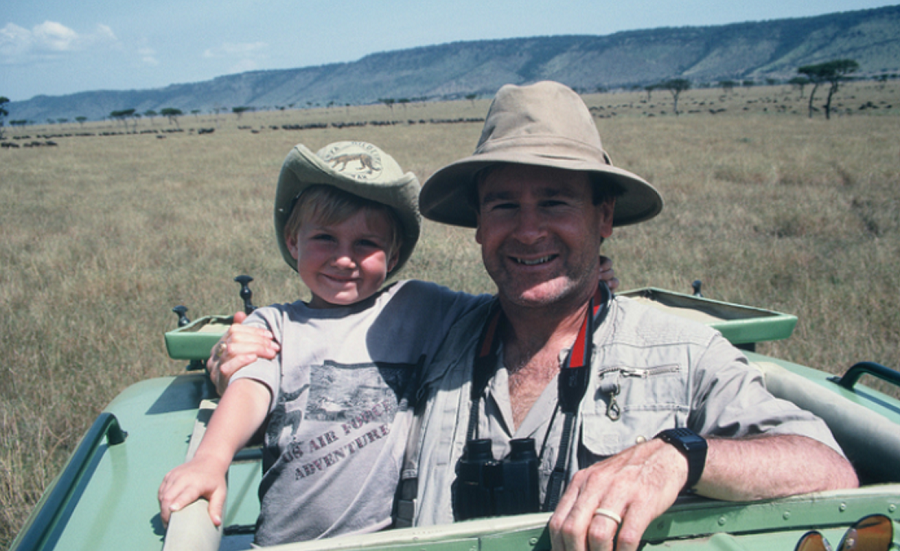 And his father too. I started taking my son Brandon on expeditions with me at age five. Here we are in the Serengeti during the Great Migration. He saw three lion kills happen yards away, a baby born in a Masai hut – he’s never forgotten his first great adventure to this day, over 30 years later.
And his father too. I started taking my son Brandon on expeditions with me at age five. Here we are in the Serengeti during the Great Migration. He saw three lion kills happen yards away, a baby born in a Masai hut – he’s never forgotten his first great adventure to this day, over 30 years later.
I encourage you in every way to take your children, grandchildren, nephews or nieces on an exploration of one of our planet’s many wondrous places when they are young. It will be formational for them, a founding experience of awe for what a magically extraordinary world they are privileged to live in. And your seeing it through their eyes will be a shot of youth elixir in your veins. It will be a life-memorable bonding experience for you both. (Glimpses of Our Breathtaking World #92 photo ©Jack Wheeler)
THE BLUE CITY OF CHEFCHAOUEN
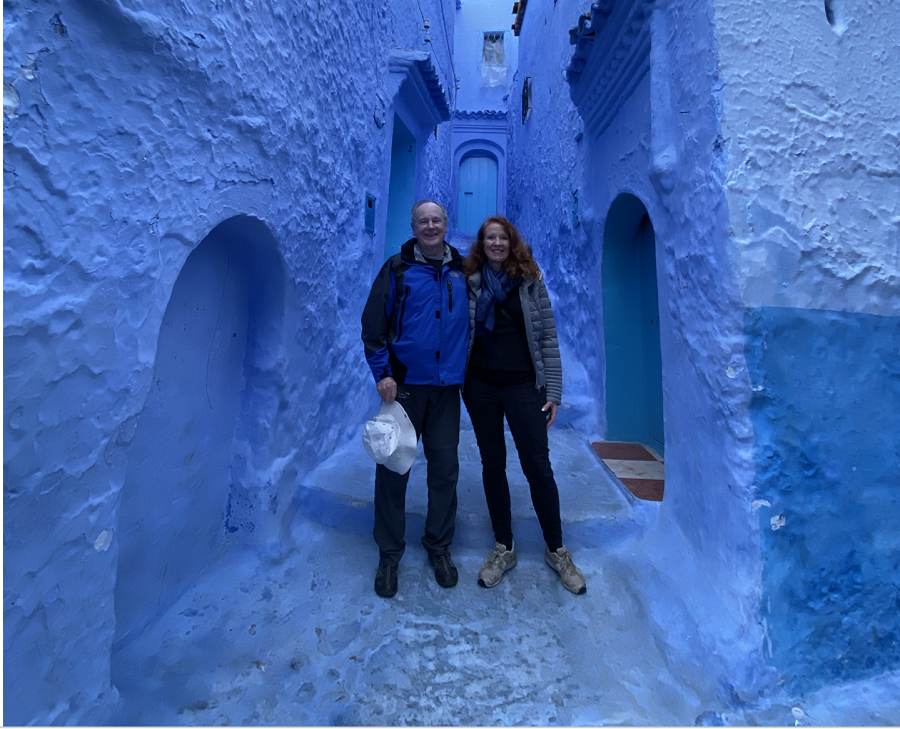 My wife Rebel and I love this uniquely picturesque ancient Berber village in Morocco where everything is painted in shades of blue. Suffused in soothing blue, there’s no more relaxed place than just about anywhere. Everyone is welcome from the wealthy staying in sumptuous boutique hotels to backpackers in hostels. There are no “tourist spots,” for every café and bar is where the locals go themselves. (It’s pronounced shef-shah-win, by the way.)
My wife Rebel and I love this uniquely picturesque ancient Berber village in Morocco where everything is painted in shades of blue. Suffused in soothing blue, there’s no more relaxed place than just about anywhere. Everyone is welcome from the wealthy staying in sumptuous boutique hotels to backpackers in hostels. There are no “tourist spots,” for every café and bar is where the locals go themselves. (It’s pronounced shef-shah-win, by the way.)
Berbers – “Amazigh” (Unconquered) in their language, are the original people of Morocco having lived there for over 12,000 years. They are directly related to the reindeer-herding Lapps of Lapland in northern Scandinavia (they share the same mitochondrial DNA haplogroup U5b1b). Both are descended from the same stock of Cro-Magnon Ice Age hunters in Western Europe that split in two 15,000 years ago – one moving far north, the other south crossing the Gibraltar Strait to Africa.
One more reason why Morocco is so magical. Would you like to experience the Magic of Morocco with us next year? (Glimpses of Our Breathtaking World #21 photo ©Jack Wheeler)
FLASHBACK FRIDAY: THE TOMB OF CYRUS THE GREAT
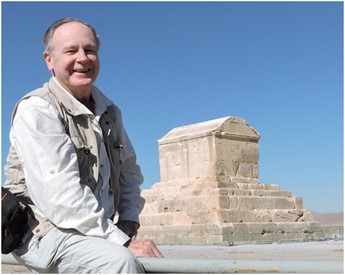 In the vast valley of Pasargadae there stands this simple tomb with nothing around it for miles and miles. It has been like this for many centuries, for it entombs the founder of Persia, Cyrus the Great (600-530BC). Revered as the liberator of the Jews from their Babylonian captivity in 539 BC, hailed by Herodotus for his humanity and wisdom, this small structure symbolizes the humility of an extraordinary man. Yet the tomb is a structure of engineering genius, the oldest built on principles of base-isolation withstanding the countless earthquakes Persia has suffered for the last 2500 years.
In the vast valley of Pasargadae there stands this simple tomb with nothing around it for miles and miles. It has been like this for many centuries, for it entombs the founder of Persia, Cyrus the Great (600-530BC). Revered as the liberator of the Jews from their Babylonian captivity in 539 BC, hailed by Herodotus for his humanity and wisdom, this small structure symbolizes the humility of an extraordinary man. Yet the tomb is a structure of engineering genius, the oldest built on principles of base-isolation withstanding the countless earthquakes Persia has suffered for the last 2500 years.
I was first here in 1973 when Persia (renamed Iran in 1933) flourished under the Shah. Here I am in 2014, when everyone I met expressed admiration for America and their contempt for the mullah tyranny they endured. I hope to return once more when the Land of Cyrus will be free again. (Glimpses of Our Breathtaking World #146 Photo ©Jack Wheeler)
HALF-FULL REPORT 03/10/23
TTP honors and celebrates International Women’s Day this week! Where to start, Step One:
 Step Two would be to honor and celebrate actual real female XX-chromosome women – and not mentally-ill gender-dysphoric actual real male XY-chromosome men pretending to be women.
Step Two would be to honor and celebrate actual real female XX-chromosome women – and not mentally-ill gender-dysphoric actual real male XY-chromosome men pretending to be women.
Step Three is to ridicule and laugh at woke idiocy claiming that such men are XX-chromosome women.
Such as Arkansas Gov. Sarah Huckabee Sanders did regarding a man winning an International Women of Courage Award at the White House on Wednesday (3/08):
Step Four would be to denounce tranny-worship as misogyny, hatred and disrespect for real women; define the term “woman” in state and federal law (such as Title IX) as “a person with an XX and not an XY chromosome”; and publicly label anyone who claims a man with a Y chromosome can be a woman as a “biology denier.”
Oh, and demand that Justice Ketanji Brown recuse herself from any SCOTUS case regarding Title IX, as she testified she doesn’t know what a woman is.
There is so much more in this HFR!! Jump right on in… this is going to blow you away!
THE MYSTERY OF THE REEF OF HEAVEN
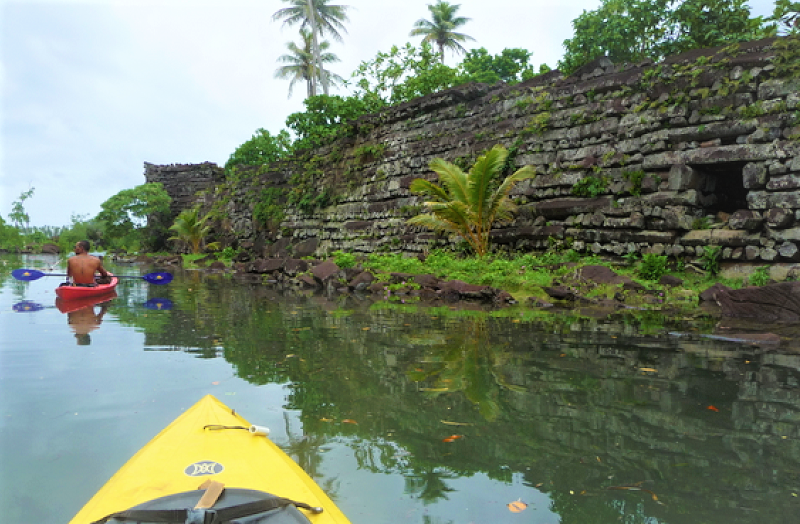 In a remote corner of the Pacific Ocean, off the island of Pohnpei in Micronesia lies one of the world’s great archaeological mysteries: the only ancient stone city built on a coral reef. No one knows who built it or how.
In a remote corner of the Pacific Ocean, off the island of Pohnpei in Micronesia lies one of the world’s great archaeological mysteries: the only ancient stone city built on a coral reef. No one knows who built it or how.
Micronesians say their ancestors called it Soun Nan-leng, The Reef of Heaven. Their name for it today is Nan Madol, the City of Ghosts.
On artificial islets connected by a series of canals are massive walls up to 25 feet high enclosing temples, tombs, ritual centers, and platforms for thatch homes – all made of giant columnar basalt stone. Eons ago, lava flows on Pohnpei cooled into vertical pillars. Over a thousand years ago, ancient Micronesians began hauling these basalt logs miles away to build this stone city. With an average weight of 5 tons, 10,000 pounds – and some up to 25 tons, 50,000 pounds each – how they did this remains unexplained. It lies deserted today, abandoned and lost for centuries.
Paddling a kayak through the canal maze of Nan Madol to clamber over these monumental stone complexes in solitary silence – for visitors are rarely here – leaves you in a state of unforgettable awe. (Glimpses of Our Breathtaking World #6 Photo ©Jack Wheeler)
THE FLATTEST PLACE ON EARTH
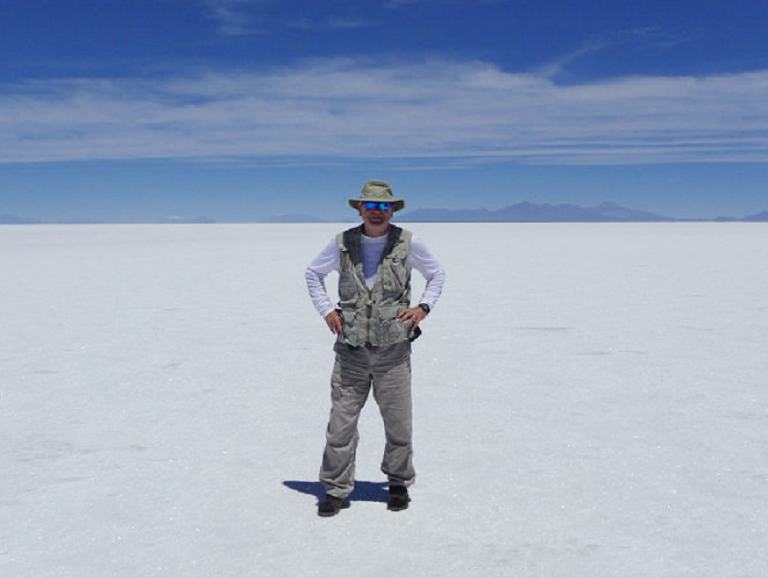 The Salar de Uyuni, 12,000 feet high in the Altiplano of Bolivia, is a 4,000 square mile expanse of salt so flat it is used to calibrate the altimeters of NASA observation satellites of the earth. After a rain, it becomes the world’s largest mirror, 80 miles across. The incredible reflective surface extends to the horizon in every direction – it is both hallucinatingly disorienting and makes for amazing mirror-to-horizon photos (especially at sunrise/sunset).
The Salar de Uyuni, 12,000 feet high in the Altiplano of Bolivia, is a 4,000 square mile expanse of salt so flat it is used to calibrate the altimeters of NASA observation satellites of the earth. After a rain, it becomes the world’s largest mirror, 80 miles across. The incredible reflective surface extends to the horizon in every direction – it is both hallucinatingly disorienting and makes for amazing mirror-to-horizon photos (especially at sunrise/sunset).
The brine underneath the salt crust contains 70% of the world’s lithium – critical to our battery-fueled global economy – produced in evaporation pools that are a kaleidoscope of colors.
You can stay here in relative luxury at one of the world’s most unique hotels – the Palacio de Sal, built entirely of salt: walls, floors, ceilings, furniture, sculptures. Being here is one of South America’s more astounding experiences. Let me know if you want a Wheeler Expedition to take you there! (Glimpses of Our Breathtaking World #39 Photo ©Jack Wheeler)
THE ISLANDS OF SERENITY
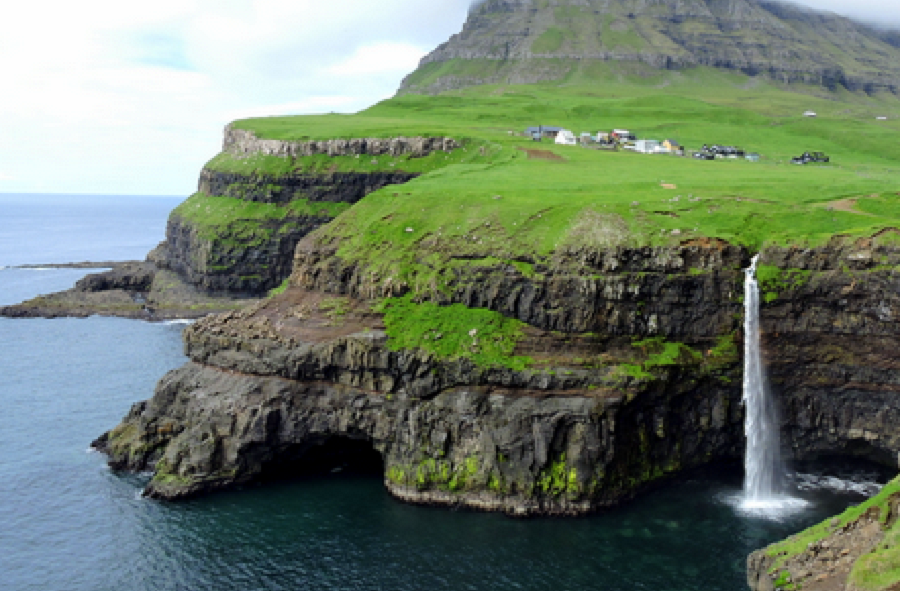 Mulafassur waterfall below the village of Gasadalur is only one example of the serenity of the Faroe Islands. They’re a self-governing Danish possession in the North Atlantic halfway between Norway and Iceland. You won’t find a place of more captivating serene and peaceful charm.
Mulafassur waterfall below the village of Gasadalur is only one example of the serenity of the Faroe Islands. They’re a self-governing Danish possession in the North Atlantic halfway between Norway and Iceland. You won’t find a place of more captivating serene and peaceful charm.
Warmed by the Gulf Stream, in the summer it’s so strewn with wildflowers the roads are known as “buttercup highways.” At every turn along them you’re stunned by the incredible scenery. The capital of Torshavn is so laid back the Prime Minister’s Office – the Løgmansskristovan – is a wood cabin with a green grass sod roof. Great beer from the Faroes’ two breweries is always flowing in the pubs, where the Faroese islanders welcome you like an old friend.
You can easily fly here from Edinburgh, London, Copenhagen, or Reykjavik, Iceland . A few days here will do wonders for your soul. (Glimpses of Our Breathtaking World #18 photo ©Jack Wheeler)
ALL FIVE STANS AGAIN
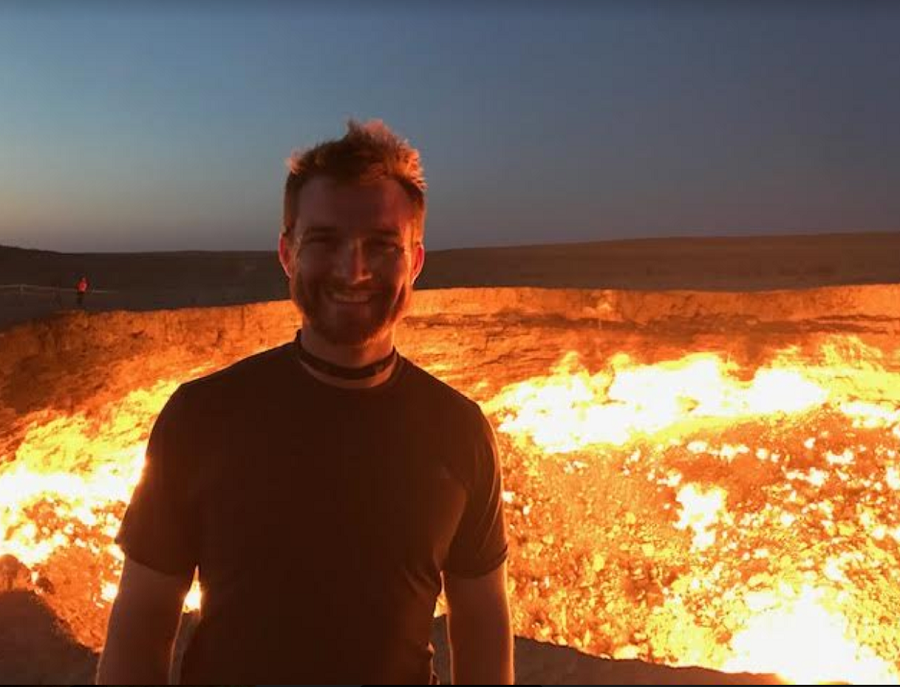 This is my son Brandon at “The Door of Hell” – the Darvaz Gas Crater in Turkmenistan, one of the “Five Stans” of Central Asia, the ultimate in the remote, the exotic, the unknown full of wonders.
This is my son Brandon at “The Door of Hell” – the Darvaz Gas Crater in Turkmenistan, one of the “Five Stans” of Central Asia, the ultimate in the remote, the exotic, the unknown full of wonders.
Here you will find the ancient cities of the Silk Road still in all their splendor, and one of the glitziest cities you’ll ever see built yesterday in the middle of nowhere. Here you will find the Mountains of Heaven, the Door of Hell, and the Seven Pearls of Shing.
We explored all five in 2018 and 2019, but then came the Covid Lunacy with the world going wacko over a flu bug. Finally we were able to explore four of the five last September (2022) but Turkmenistan remained closed.
Now we just received word that Turkmenistan is reopening at last – so our Heart of Central Asia 2023 this September will soon be revised – for crossing the Kara Kum Black Sand Desert to spend overnight in a yurt at the Door to Hell, and on to Turkmenistan’s marble capital Ashgabad.
It’s All Five Stans again! Hope you’ll be joining us. (Glimpses of Our Breathtaking World #259 photo ©Jack Wheeler)
FLASHBACK FRIDAY – LIFE MAGAZINE DECEMBER 12, 1960
 Yes, believe it or not, this was a 4 page story in LIFE Magazine more than sixty years ago when I first swam the Hellespont. I repeated the swim twelve years later for my book, The Adventurer’s Guide. You can see the whole LIFE story here. Quite an adventure for a 16 year-old kid. (Glimpses of Our Breathtaking World #121 Photo ©Jack Wheeler)
Yes, believe it or not, this was a 4 page story in LIFE Magazine more than sixty years ago when I first swam the Hellespont. I repeated the swim twelve years later for my book, The Adventurer’s Guide. You can see the whole LIFE story here. Quite an adventure for a 16 year-old kid. (Glimpses of Our Breathtaking World #121 Photo ©Jack Wheeler)
THE REMOTEST SWIMMING POOL
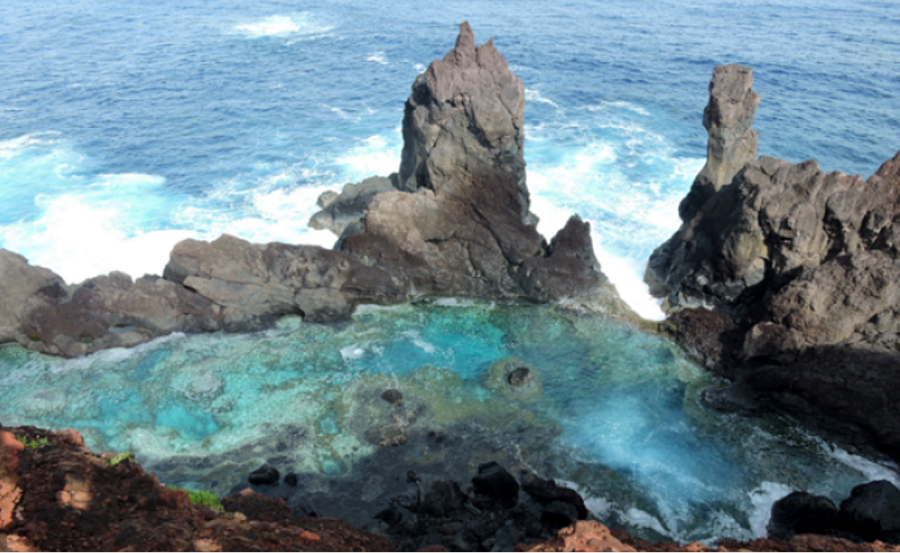 This is St. Paul’s Natural Pool on Pitcairn Island, where in 1790 Fletcher Christian and his mutineers of the Mutiny on the Bounty settled, and where their descendants live to this day. They were awed by the uninhabited island’s lush beauty, with huge banyan trees rising above them like giant cathedrals, and thought it a Garden of Eden where anything grew, coconuts, bananas, taro, breadfruit, mangoes, guavas, passion fruit, yams and sweet potatoes in the rich volcanic soil.
This is St. Paul’s Natural Pool on Pitcairn Island, where in 1790 Fletcher Christian and his mutineers of the Mutiny on the Bounty settled, and where their descendants live to this day. They were awed by the uninhabited island’s lush beauty, with huge banyan trees rising above them like giant cathedrals, and thought it a Garden of Eden where anything grew, coconuts, bananas, taro, breadfruit, mangoes, guavas, passion fruit, yams and sweet potatoes in the rich volcanic soil.
Pitcairn has no beaches, though, so this was their swimming hole – and still is for Pitcairners today. They are happy to take you here, and to the island’s colorfully named spots, like Where Dick Fall, Oh Dear, Break Im Hip, Down the Hole – and to Fletcher Christian’s Cave, his lookout for British warships hunting them (they failed for 25 years) .
It’s not easy to get here – fly to Tahiti, then remote Mangareva from where you sail for two days on a supply ship. But you’ll be so welcome upon arrival. You stay in one of their homes in Adamstown and be treated like family. It’s a travel experience like none other. (Glimpses of Our Breathtaking World #63 photo ©Jack Wheeler)
THE POLYNESIA PARADISE YOU NEVER HEARD OF
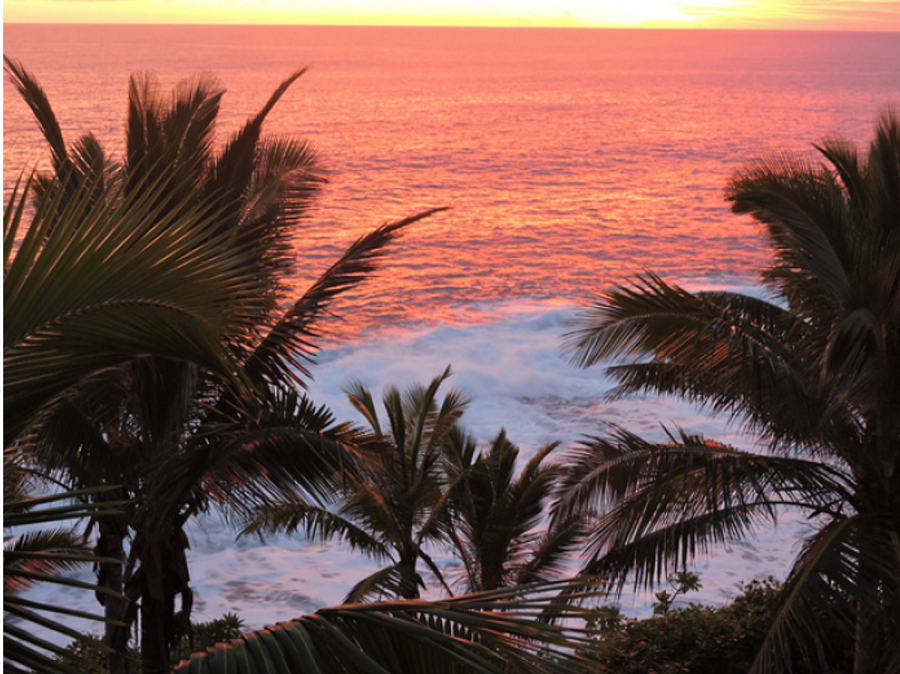 Have you ever seen the ocean turn day-glo pink? It does here naturally during a sunset (this is not photoshopped). Between Samoa and Tonga in the South Pacific is a raised coral atoll, 100 square miles of old limestone between 60 and 200 feet high: the island of Niue (new-way), and it’s is uniquely fabulous.
Have you ever seen the ocean turn day-glo pink? It does here naturally during a sunset (this is not photoshopped). Between Samoa and Tonga in the South Pacific is a raised coral atoll, 100 square miles of old limestone between 60 and 200 feet high: the island of Niue (new-way), and it’s is uniquely fabulous.
With no silty river runoff, the water is incredibly clear – visibility can reach over 200 feet. There are a multitude of chasms through which you clamber to these out-of-a-movie tidal pools perfect for snorkeling surrounded by colorful reef fish. The limestone cliffs encircling the coast are riddled with caves with multi-colored stalactites and stalagmites.
You can snorkel or dive with spinner dolphins and humpback whales. The big game fishing is world class – within a few hundred yards off shore. The Niueans are unfailingly friendly and welcoming, the beautiful Matavai Resort is the best bargain in the Pacific, the food and beer is inexpensive, the weather is balmy. It’s a Polynesian paradise you never heard of. (Glimpses of Our Breathtaking World #48 Photo ©Jack Wheeler)
THE RED-OCHERED WOMEN OF THE HIMBAS
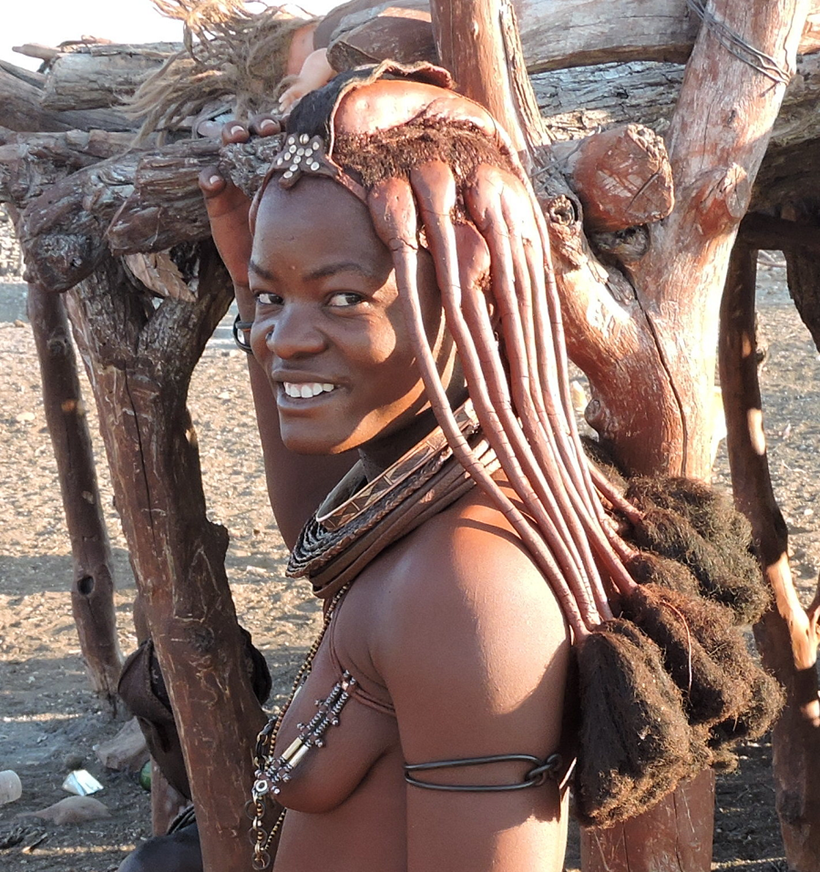 The Himbas are a tribe of nomadic cattle herders in far northern Namibia. Himba women make a paste of butter fat and red ochre clay called “otjize,” to protect their skin from the burning African sun and braid their hair for beautification.
The Himbas are a tribe of nomadic cattle herders in far northern Namibia. Himba women make a paste of butter fat and red ochre clay called “otjize,” to protect their skin from the burning African sun and braid their hair for beautification.
The Himbas’ exotic practices are not for tourists. This is the way they live as one of Africa’s most genuinely traditional peoples. Living on the move in remote roadless regions, it takes an effort to find them. But when you do, coming with an attitude of respect, you will be welcomed with smiles and hospitality in return. (Glimpses of Our Breathtaking World #66 Photo ©Jack Wheeler)
THE UNIQUE BEAUTIFICATION OF KAYAN WOMEN
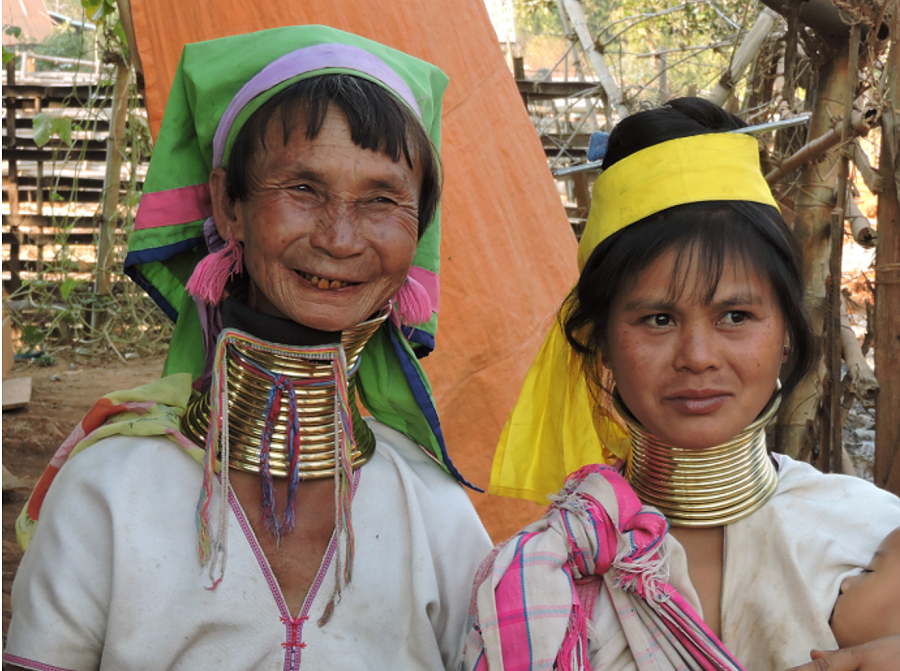 The Kayan tribal people live in a remote roadless valley in the Shan Hills of Burma. Kayan women practice their tradition of beauty starting at age five. The young girls have a few brass coils placed around their necks, adding to them progressively as they grow until in older adulthood they are wearing as many as two dozen – becoming what the world knows them as Giraffe women. (The Shan people call them "Padaung" meaning "long-necked," but they call themselves Kayan.)
The Kayan tribal people live in a remote roadless valley in the Shan Hills of Burma. Kayan women practice their tradition of beauty starting at age five. The young girls have a few brass coils placed around their necks, adding to them progressively as they grow until in older adulthood they are wearing as many as two dozen – becoming what the world knows them as Giraffe women. (The Shan people call them "Padaung" meaning "long-necked," but they call themselves Kayan.)
We are not here to gawk. We are here to make friends, treat them respectfully, and learn about their traditions. It is an intensely memorable experience to meet these ladies. We’ll be here again in early March next year. (Glimpses of Our Breathtaking World #58 photo ©Jack Wheeler)
FLASHBACK FRIDAY – LIVING WITH HEADHUNTERS
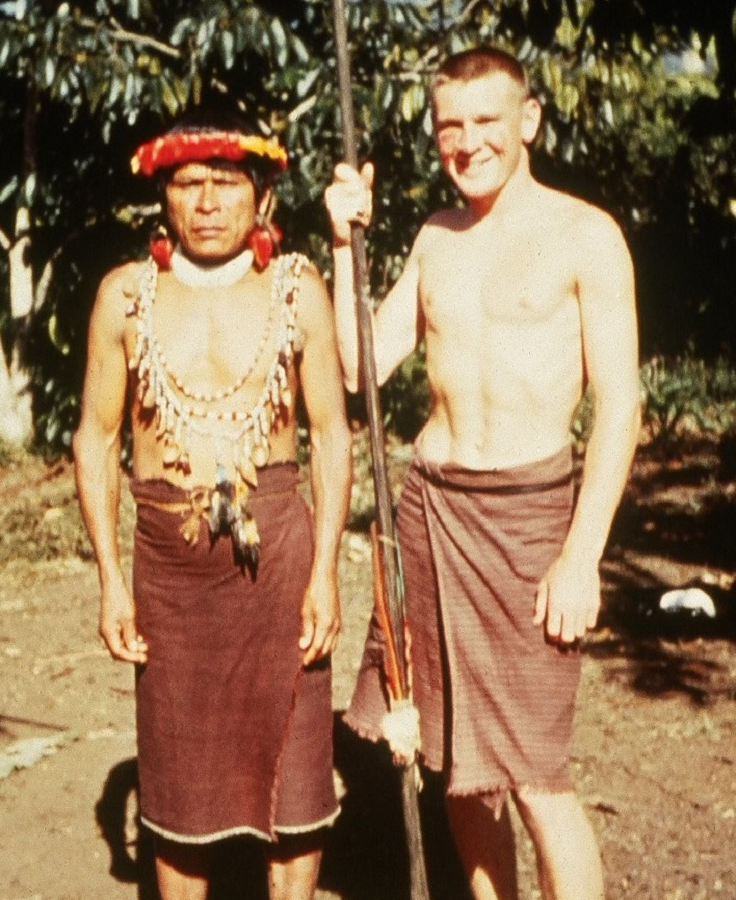 Yes, that’s me at 16 (in 1960!) with Tangamashi, a Shuar Jivaro chief who adopted me into his clan. The Jivaros are the only people on earth who make a shrunken head of their enemies killed in battle – called a “tsantsa.”
Yes, that’s me at 16 (in 1960!) with Tangamashi, a Shuar Jivaro chief who adopted me into his clan. The Jivaros are the only people on earth who make a shrunken head of their enemies killed in battle – called a “tsantsa.”
They inhabit the Amazon rain forests of the Ecuador-Peru border; living with them was the first adventure I had by myself alone. Tangamashi accepted me, taught me how he made a tsantsa from an enemy’s head skin, took me blowgunning monkeys with curare-tipped darts, and introduced me into the Jivaro spirit world with a tea they called “natema” from the Banisteriopsis vine – a very colorful experience. How cool can you get for a 16 year-old kid?
It set me on a path of an adventurous life from which I have never wavered – and there’s no slowing down now. Another great adventure always awaits. (Glimpses of Our Breathtaking World #25, photo ©Jack Wheeler)

